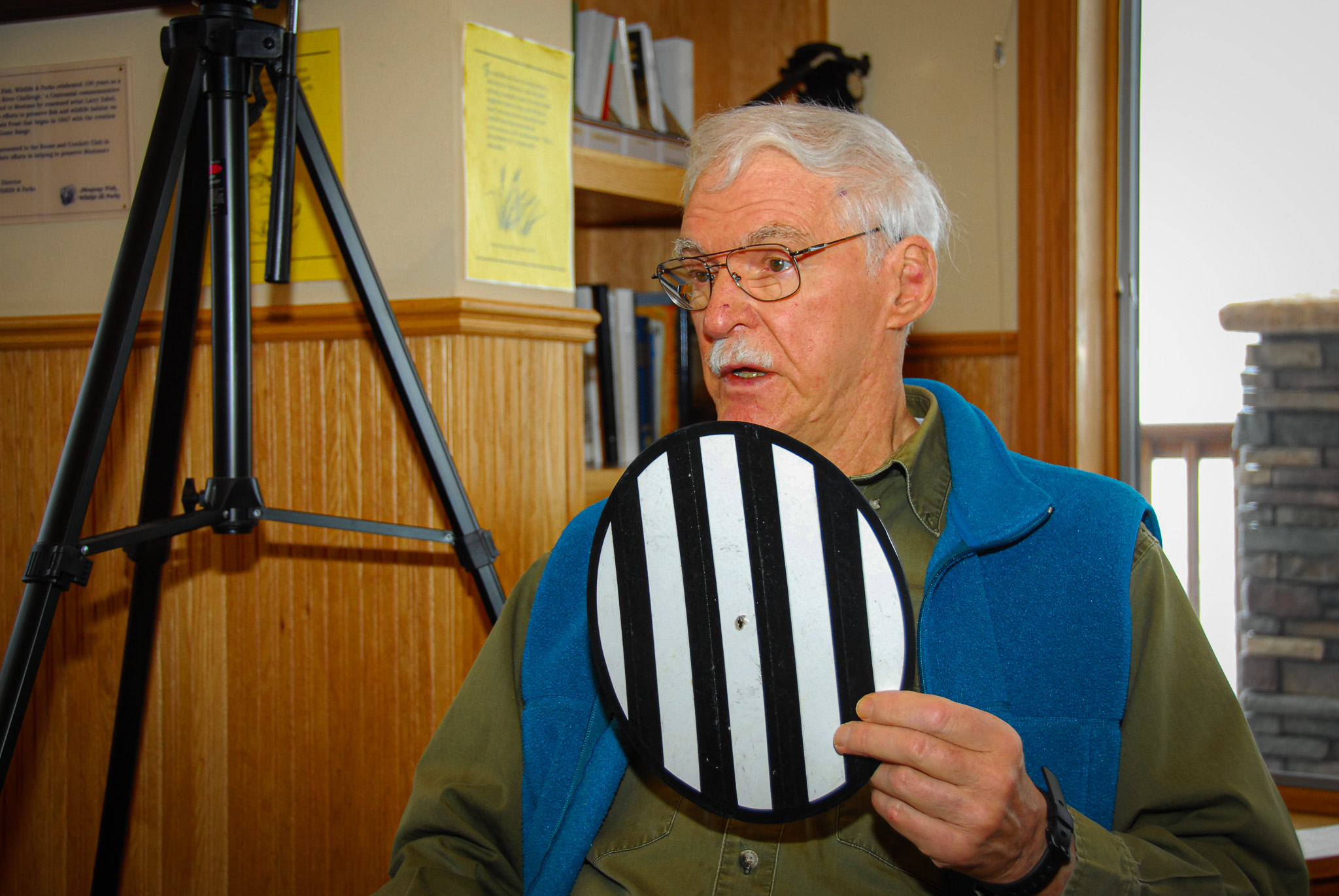I’m still working through content from this summer’s Outdoor Life optics test, in which I dragooned volunteer testers to evaluate 45 rifle scopes, 17 binoculars, eight spotting scopes, and 23 thermal viewers and sights.
It’s a massive undertaking, teasing out the merits — and often the glaring shortcomings — of the year’s new optics. And while we’ve added various methodologies over the years as optics have evolved, the bones of Outdoor Life’s test are the same that Bill McRae developed more than 30 years ago.
We still calculate the precise resolution of each optic, and we still subject every submission to our low-light test that measures how well optics transmit light and parse details as night falls. That’s a critical consideration for hunters, because the time you most need a good optic isn’t in the sunshiny middle of the day, when all optics perform well enough. It’s when the light begins to vanish and animals move. The optics industry historically hates our test because it reveals shortcomings in performance that are often contrary to brands’ hyperbolic (and sometimes misleading) marketing campaigns.
Photo by Bill McRae / Outdoor Life Archive
McRae developed his test as a real-world yardstick of optical performance. He did not rely on laboratory light-transmission devices or digital spectrometers but instead on hunters and shooters. We learned, through McRae’s tutelage, that a mushy scope turret dial is a leading indicator of a crappy erector system that probably tracks imprecisely and is prone to failure. A binocular that exhibits flaring and edge distortion, he explained, will also give you a headache after an extended glassing session.
McRae taught me how, by simply shining a penlight into the objective lens of an optic, I could spot dust, fingerprints, and tooling marks — evidence of shoddy construction that created what he called “NIFL,” or non-image-forming light. That was a Bill-ism for the jags of stray light that degrade optical clarity and detract from the performance of a spotting scope, binocular, or rifle scope. His little penlight test has confirmed over the last decades an optics truism: Crudely-made optics generally perform poorly.
Bill McRae died last week in his beloved Montana, ending a run as one of the originals of the golden age of outdoor writing and wildlife photography. He was 89 and, while he had stopped contributing articles to Outdoor Life and other publications a full decade ago, McRae remained on OL’s masthead as Optics Editor Emeritus, a title that honored his role as the godfather of optics testing.

Photo by Andrew McKean
Long before I met Bill, and decades before he refined his optics-testing methodologies, he had cemented his reputation as a top-tier outdoor writer. It was an unlikely career for the Wisconsin native who came West to work on large-scale construction projects — he was a union ironworker by trade — and stayed to marry, raise a family, and learn the art and science of wildlife photography. His stunning photos introduced him to magazine editors, who encouraged his writing. At the height of his second career, he contributed dozens of feature-length stories to Outdoor Life and other publications.
Bill’s love of photography, and his skills transforming light and landscape into photographs, led him to sports optics. He once told me that he became an optics expert largely because no one else at the time was writing about how riflescope erector systems work, or explaining to readers the importance of light transmission and parallax.
Bill comprehended the complicated physics of optics, but it was his understanding of how optics are used by hunters and shooters in the dust and abuse of the real world, not in a temperature-controlled lab, that endeared him to readers and made him a valuable resource for optics designers.

Photo by Andrew McKean
I met Bill in 2006, the first year I helped the Outdoor Life crew as an optics tester. That was on California’s Tejon Ranch. The next year we took the optics test to Bill’s home in Choteau, Montana, and later combined Outdoor Life’s gun test with the optics test, moving the behemoth tests around the country to various venues.
With every iteration, I realized over time, Bill was preparing me to take his role as captain of the optics test. He was a patient teacher, generous with his prodigious knowledge, and along with his wife Mary, a gracious host to a generation of Outdoor Life editors and volunteer optics testers. In the basement of his house — the sprawling room we started calling the “Optics Bunker” — Bill operated a rudimentary but highly capable optic-testing lab. Here was his collimator, an illuminated tube with a crosshair to measure the precise reticle movement, turret adjustment range, and return-to-zero of riflescopes. There was his resolution range, with a vintage Air Force bombardier target, to measure the vanishingly minute detail the best optics can resolve. In Bill’s lab, rubber bands were used to hold thousand-dollar binoculars to tripods and to lash riflescopes to dummy rifle stocks.
From that homespun lab, Bill influenced the entire sporting optics industry. Bill’s real-world testing methodology detected major flaws in design and performance, and helped launch brands by designing and testing prototypes. He helped optics pioneer Bushnell transition to Bausch + Lomb, and then back to Bushnell. McRae introduced Czech optics company Meopta to American hunters and shooters. He helped Cabela’s develop its line of premium optics, and elevated countless brands with an honest review in Outdoor Life.
Even as he stepped aside from regularly testing optics, Bill always asked me what I was seeing, which brands were producing quality products, and which ones were slipping. But he genuinely cared about people, and he also asked about the product managers he no longer emailed and optics-industry marketers who no longer called for coverage. And he asked about me, my family, and my life well beyond our shared vocation.
Little by little, I saw the light in his piercing hawk eyes dim. He lost his beloved Mary, just as he had lost a son and a daughter earlier in life. He told me a couple years ago that he felt the world no longer had a place for him.

Photo by Andrew McKean
Bill also told me once about how his life changed when he looked through a binocular for the first time. He was a Wisconsin farm kid with cows to milk and a mother to please, but a neighbor had an old leather-clad porro prism binocular brought back from the war — the first World War. Those smudged lenses revealed a new and exciting world to Bill McRae, who often described optics as “magic black tubes” that have the ability to astonish viewers.
Read Next: The Best LPVO Scopes of 2024, Tested and Reviewed
Optics allow us to shrink distance. To see in the dark. To make lethal shots at ranges far beyond our physical abilities. They transport us on light waves to distant mountains. They give us knowledge of things beyond the eyesight of mortals.
Bill’s enduring legacy may be his singular ability to make complicated topics accessible, and through optics, to reveal worlds that are waiting to be discovered. The next time you peer through a binocular, or focus the reticle in a riflescope, you can thank Bill McRae for making that product better, more affordable, and more durable. And just a little bit magical.
Read the full article here




